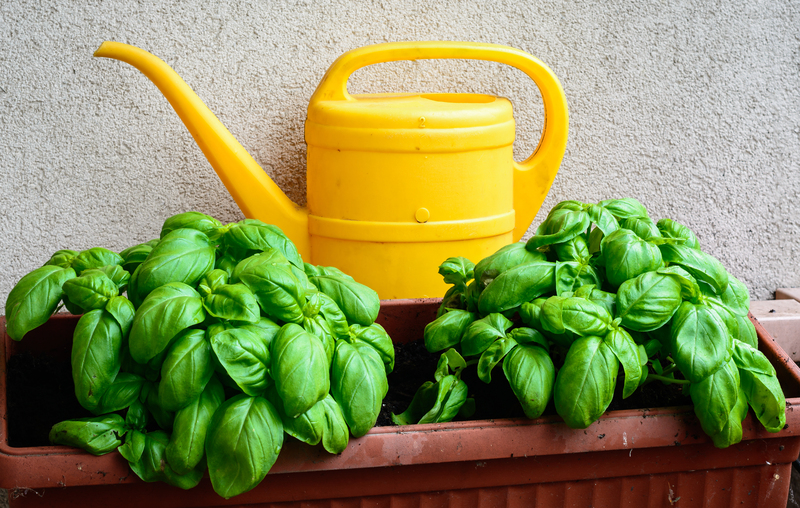Dry Garden Planting Strategies
Gardening does not always equate to verdant, lush landscapes filled with water-intensive plants. Dry garden planting, also known as xeriscaping, is a sustainable and efficient method that allows gardeners to create beautiful, thriving gardens while conserving water. This comprehensive guide will walk you through various strategies to establish your dry garden, ensuring it flourishes with minimal water input.
Understanding Xeriscaping
Xeriscaping is derived from the Greek word "xeros," meaning dry. It is a form of landscaping that reduces or eliminates the need for supplemental water from irrigation. This approach does not only focus on water conservation but also appeals to aesthetic preferences, creating a garden that blends harmoniously with its natural environment.

The Importance of Soil Preparation
One of the foundations of a successful dry garden is the soil. The right soil can significantly reduce water needs and enhance plant health. Here's how to prepare the soil effectively:
Soil Testing
Start by testing your soil to determine its composition and pH levels. Most drought-tolerant plants prefer well-draining soil, which often means sandy or gravelly textures. Soil testing kits are available at garden centers, or you can send a sample to a local extension office for analysis.
Amendments
If your soil is heavy clay, it will need amendments to improve drainage. Organic matter such as compost or decomposed leaves can be added to lighten heavy soils. Alternatively, sand or fine gravel can be incorporated to achieve better drainage.
Mulching
An essential component of dry gardening is mulching. A thick layer of mulch helps retain soil moisture, suppresses weeds, and keeps the soil temperature consistent. Organic mulches like bark, straw, or compost work well, but inorganic mulches such as gravel or pebbles are also effective and long-lasting.
Choosing the Right Plants
Selecting appropriate plants is crucial in xeriscaping. Not all plants are suited for dry conditions, so focus on species that thrive in arid environments.
Native Plants
Native plants are ideal for dry gardens as they are adapted to local climate and soil conditions. They often require less water and are more resistant to local pests and diseases. Research native plants that are known for their drought tolerance in your region.
Succulents and Cacti
Succulents and cacti are synonymous with dry landscapes. They store water in their leaves, stems, or roots, enabling them to survive long periods without rain. Popular choices include Agave, Echeveria, and Aloe.
Perennials and Shrubs
Many perennials and shrubs are well-suited for dry gardens. Plants such as Lavender, Sage, and Russian Sage (Perovskia) offer beautiful blooms and fragrant foliage. Additionally, shrubs like Rosemary and Juniper provide structure and year-round interest.
Efficient Irrigation Techniques
Even with drought-tolerant plants, occasional watering may be necessary, especially during establishment. Employing efficient irrigation techniques can make a significant difference.
Drip Irrigation Systems
Drip irrigation systems deliver water directly to the plant roots, minimizing evaporation and runoff. These systems are ideal for dry gardens as they ensure that plants receive the right amount of water without wastage.
Soaker Hoses
Similar to drip systems, soaker hoses allow water to seep out slowly along their length, directly soaking the soil around plants. They are easy to install and are a cost-effective solution for water conservation.
Water Timing
Watering during the early morning or late evening reduces water loss due to evaporation. It also helps plants better absorb moisture, especially during hot weather.
Designing for Aesthetics and Function
A dry garden doesn't have to compromise on visual appeal. Thoughtful design can result in a stunning landscape that is both functional and beautiful.
Grouping Plants
Grouping plants with similar water requirements together makes watering more efficient and ensures that all plants receive the necessary moisture without over or under-watering.
Creating Zones
Divide your garden into different zones based on water needs. For example, place the most drought-tolerant plants in the driest areas and those that require more moisture in shadier or lower-lying sections.
Hardscaping Elements
Incorporate hardscaping elements like pathways, rock gardens, and gravel beds to reduce the amount of water-reliant vegetation. These features add texture and structure to your garden, enhancing its overall aesthetics.
Color and Texture
Use a variety of plant forms, colors, and textures to create visual interest. Mixing different foliage types, such as the spiky leaves of Agave with the soft, feathery foliage of Lavender, can create a dynamic garden landscape.

Maintaining a Dry Garden
Maintenance in a dry garden involves more than watering. Proper care ensures that your garden continues to thrive with minimal water input.
Weeding Regularly
Weeds compete with plants for water and nutrients. Regular weeding is essential to reduce competition and ensure that your garden plants receive adequate resources.
Pruning
Regular pruning helps maintain plant health and vigor. Remove dead or damaged stems and branches to encourage new growth and increase air circulation.
Monitoring Pests and Diseases
Even drought-tolerant plants can be susceptible to pests and diseases. Inspect your plants regularly and take action at the first sign of trouble. Natural remedies and organic treatments are preferred to keep your garden environmentally friendly.
Conclusion
Dry garden planting strategies offer a practical and attractive solution for gardening in arid climates or areas with water restrictions. By understanding the principles of xeriscaping, choosing the right plants, employing efficient irrigation techniques, designing thoughtfully, and maintaining diligently, you can create a thriving, low-water garden that is both sustainable and beautiful. Embrace the principles of dry gardening and enjoy a landscape that conserves water while providing lasting beauty and function.





